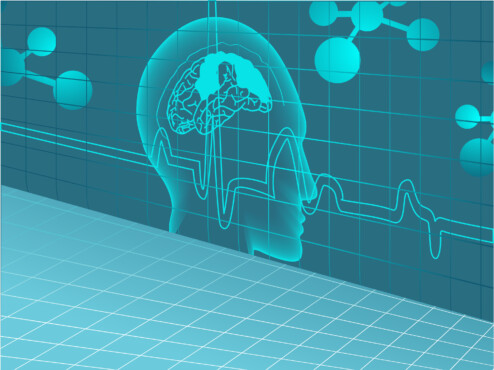
The human body is a wonderful thing! Every day, your body instinctively performs an action that is necessary to life, yet we don’t even think about what we are doing. Have you figured it out? It’s breathing! Most people breathe shallowly not completely filling their lungs with oxygen, and some wear clothing that is too tight which restricts breathing.
Normal respiration rate for adults is considered 12-20 breaths per minute at rest. As you breathe, your lungs contract and expand to dispel carbon dioxide and bring in oxygen. As you breathe in, the oxygen fills the many air sacs and diffuses through the membrane into the pulmonary capillaries. As you exhale, the carbon dioxide leaves the bloodstream and enters the air sac replacing the oxygen you inhaled. The purpose of breathing is to keep the oxygen level high so that your body functions correctly.
Breathing is controlled by the respiratory center in the brainstem or medulla. The nerve cells send impulses to the diaphragm and muscles causing them to contract and relax at specific intervals. A couple of several factors that can affect these impulses, interfering with the necessary transport of oxygen to the blood stream are:
- Low oxygen saturation: When the oxygen saturation level drops below 90%, the respiratory center increases the rate and depth of breathing. Normal saturation levels are considered to be 95% – 100%. Levels below 90% are considered low, and the lower the level the more difficulty you have in breathing.
- Chemical irritants: Unwanted substances in the airways, such as dust, pollen, water, cigarette smoke and other noxious fumes signal the respiratory center to contract causing you to sneeze or cough. This rapid, violent displacement of the air in the lungs sometimes removes the offending substance.
Some diseases also affect the proper functioning of the lungs, such as asthma, emphysema, bronchitis and apnea. These types of conditions make it much harder for your lungs to work. Other conditions can actually damage the lung’s ability to exchange oxygen for the carbon dioxide, such as pulmonary edema, cystic fibrosis, smoke inhalation and carbon monoxide poisoning.
The Five Benefits
Proper breathing can have a positive impact on your health, and one way of this is to practice deep breathing on a regular basis. Most indigenous cultures have included breathing exercises in their healing regimens for thousands of years.
Below are some benefits that can be acquired from learning how to breathe properly.
- Detoxification. The lungs are the important organs when detoxifying every day. Carbon dioxide which has already passed through the bloodstream and the lungs is released whenever air is exhaled from the body. More carbon dioxide, a natural waste of metabolism, is eliminated during deep exhalation from the lungs allowing greater lung capacity and allowing in more oxygen.
- Oxygenation. The presence of oxygen in the brain increases blood flow to muscles. When oxygen travels in the bloodstream, hemoglobin is attached to the red blood cells and then results to metabolize the vitamins and nutrients needed to enrich the body.
- Organ massage. Proper breathing promotes circulation in different organs and makes abdominal muscles stronger and more toned. When one inhales, the diaphragm moves down and the abdomen is expanded. Inhaling also massages the heart and the intestines.
- Body system support. Proper breathing supports the different functions of various body systems such as circulatory, respiratory, digestive and hormonal. Another one of these functions is metabolism. Breathing techniques promote and balance out metabolic rate every day. Body weight is also kept in check with correct breathing techniques.
- Good posture. Medical experts have mentioned that having bad posture can result in bad breathing. This is the reason why many people are advised to correct bad posture as early as possible to prevent breathing difficulties in the future. Correcting body posture earlier has several other benefits aside from correct breathing.
Breathing, much like meditation is a great way to clear your mind and lift brain fog. Breathing better allows you to oxygenate your blood delivering better quality blood to your brain and heart.
The Five Minute Meditation Breathing Exercise
Step 1 – Set a timer for 5 minutes.
Step 2 – Lay on a flat, comfortable surface. The edge of a bed works well. That way, your feet can remain flat on the floor.
Step 3 – Put on hand on your stomach, and one hand on your chest. Close your eyes.
Step 4 – Slowly inhale deeply, focusing on breathing so deeply that you feel your stomach rise. Continue to inhale until you feel that your lungs are like balloons full of air, ready to pop, and your stomach is has risen substantially. Count to 10 as you inhale, striving to reach a total of 10 counts per inhale.
Step 5 – SLOWLY exhale, allowing all air to exit from your lungs and feeling your stomach deflate as it returns to resting state. Count to 10 as you exhale too, striving to reach a total of 10 counts per exhale. This is even more important in exhalation, as we tend to exhale far more quickly than we inhale.
Step 6 – Focus on this inhalation and exhalation pattern for the next 5 minutes, particularly paying attention to feeling the breath fill up the emptiness, starting from your stomach. Use your stomach as a gauge. Remember to count as you inhale and as you exhale – trying to reach ten counts in each inhale and in each exhale.
Repeat this breathing meditation twice a day, once in the morning and once at night. Focused breathing while meditating gives your mind something to do during meditation, completely preoccupying any worried or anxious thoughts. Meanwhile, it works to calm you down and bring you to a place of centered peace.
How do you incorporate correct breathing into your day?
Sources
Disclaimer: The information contained herein is not to be construed as medical advice and is not intended to diagnose, treat, or cure any medical condition. These statements made have not been approved by the FDA, nor should they be taken as a substitute for medical advice from a licensed physician.
Affiliate Links: Some links on my website and emails are affiliate links. Should you click on these links and decide to purchase anything, I will receive a small commission and you will have my sincere thanks for supporting Tina’s Healthy Living.











